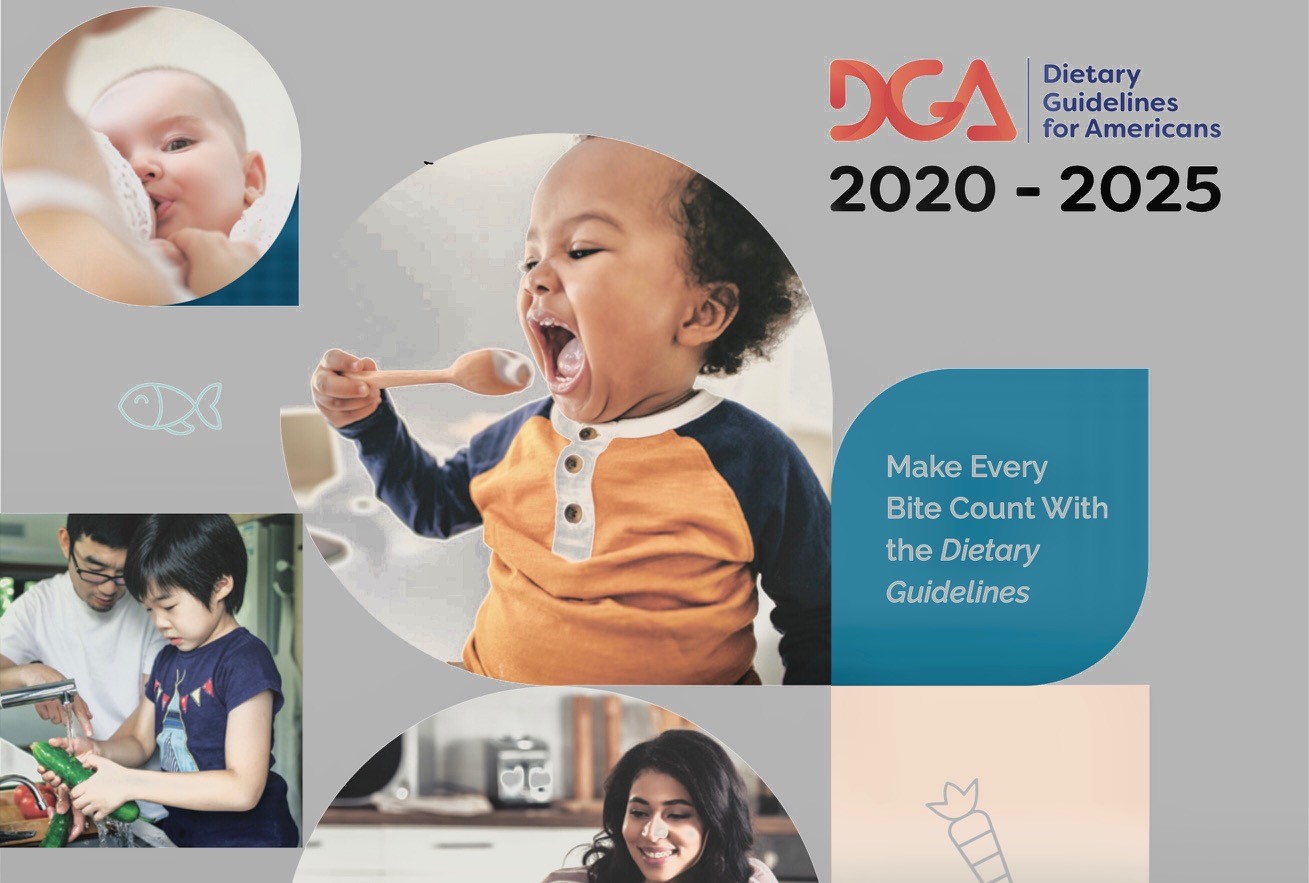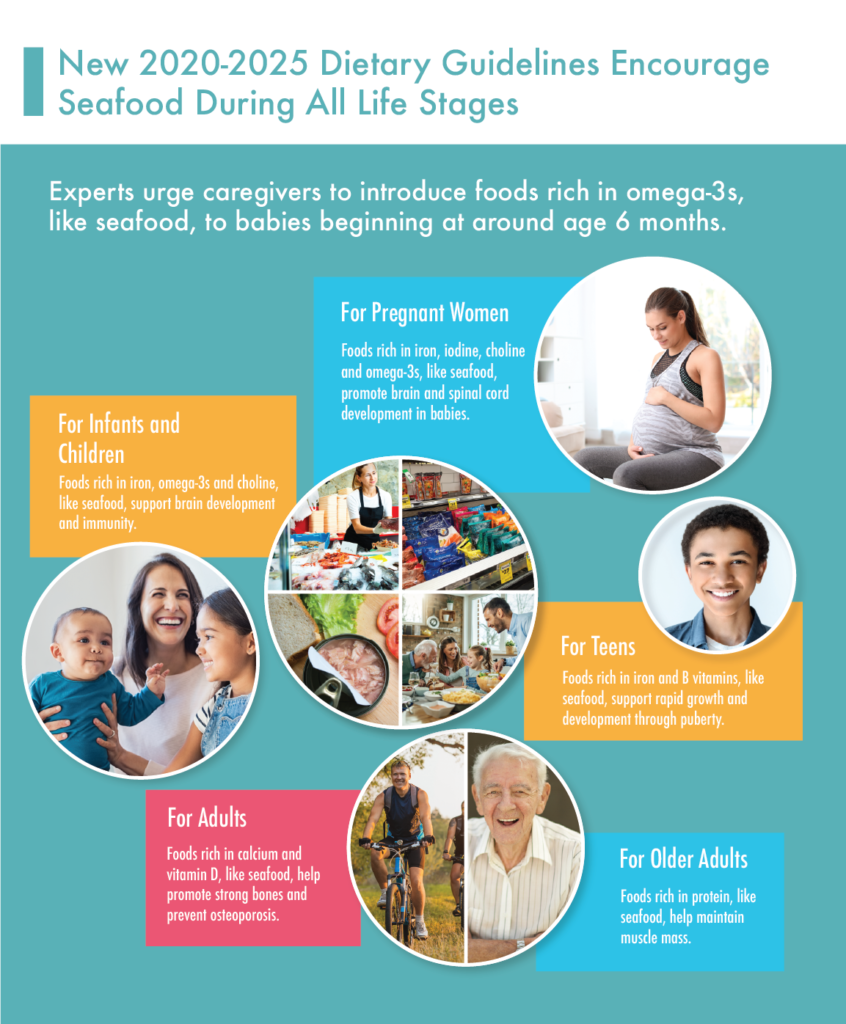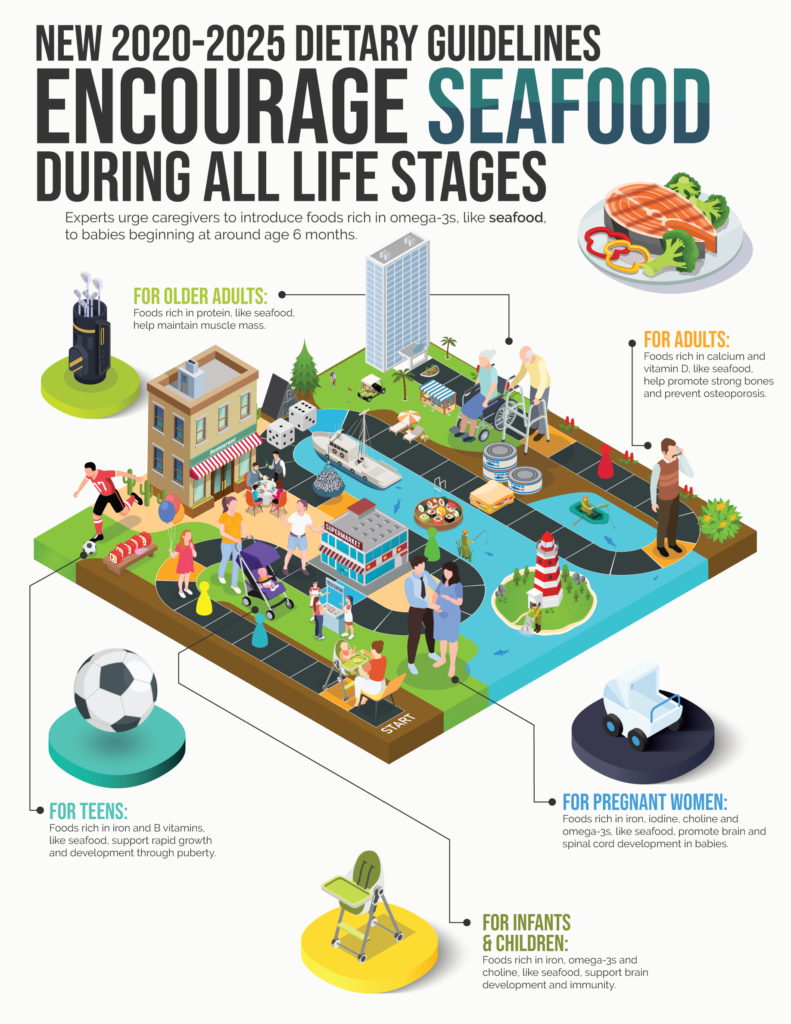From Babies to Baby-Boomers: USDA’s New 2020-2025 Dietary Guidelines Say Start Seafood Early for a Lifetime of Benefits
The Dietary Guidelines for Americans (DGA) are really important—they inform what’s in school lunches; Women, Infants, and Children (WIC) food packages; and nutrition programs for older adults. The DGA are also really long: 164 pages to be exact. Because most Americans are not sifting through every page of the science-based guidance, we’re here to highlight the recommendations for a food that continues to pop up over and over again—seafood.
Seafood at Every Stage
The 2020-2025 DGA recommend eating seafood beginning at around age 6 months and continuing through all stages of life. Here are the latest recommendations about seafood for people of all ages:
- Eat a variety of cooked seafood 2-3 times each week during pregnancy. The 2020-2025 DGA continue to recommend seafood during pregnancy. When consumed regularly during pregnancy, the nutrients in fish and shellfish like iron, iodine, choline, and omega-3s can help support optimal baby brain development.
- Introduce seafood to babies around age 6 months. This is the first round of DGA highlighting nutrition needs for babies and toddlers under 2 years old. And, seafood stands out as an important food for this age group. Why? Because seafood provides critical nutrients that tend to be lacking in many infants’ diets, such as iron, omega-3s, and choline. Additionally, starting seafood early may help shape lifelong taste preferences, as well as healthful food choices.
- Eat seafood 2-3 times each week throughout adulthood. As we age seafood provides protein, calcium and vitamin D, which help strengthen bones and maintain muscle mass.
Americans Currently Don’t Eat Enough Seafood
A whopping 94% of children and 80% of adults currently do not meet the recommendation to eat seafood twice per week. In fact, a study estimates that low seafood intake is responsible for about 84,000 American lives lost to heart disease each year, which makes seafood deficiency the second-biggest dietary contributor to preventable deaths in the U.S. To help Americans reap the benefits of fish, USDA goes beyond sharing nutrition science to include easy-to-implement guidance about how to eat more fish. USDA recommends families start simple when working toward meeting the new Dietary Guidelines by merely keeping seafood on hand.
It’s Easy to Meet New DGA Seafood Recommendations
Here are some suggestions that make eating seafood 2-3 times each week simple:
- Keep shelf-stable fish—like canned or pouched tuna and salmon—in the pantry and always have seafood—like fish, shrimp, and scallops—in the freezer.
- Add fish and shellfish to family favorite dishes, like tuna to quesadillas or mac-n-cheese, shrimp in rice and pasta dishes, and pollock or cod to tacos.
- Make it Mediterranean a couple of times every week. Try swapping out meat and poultry sometimes for a seafood-based dish. Hamburgers become salmon or crab burgers and spaghetti with meat sauce becomes spaghetti with a tuna puttanesca sauce.
- Pick out one new seafood recipe to add to your weekly meal rotations and get kids involved in meal planning, prepping, and cooking. Studies show kids are more likely to try food when they contribute to the meal.
NFI Seafood Nutrition Resources
For more family-friendly and delicious recipes and tips to help your clients, patients. or followers get more seafood on their table, check out these resources below.
- “Everyday Seafood,” our FREE Dish on Fish e-cookbook with 50+ easy seafood recipes.
- The Pregnant Woman’s Guide to Eating Seafood, our colorful and user-friendly guide that provides science-based information on choosing and eating seafood during pregnancy.
- AboutSeafood, our nutrition-focused YouTube channel featuring interviews with experts.




